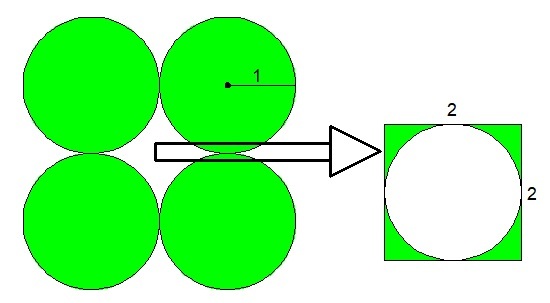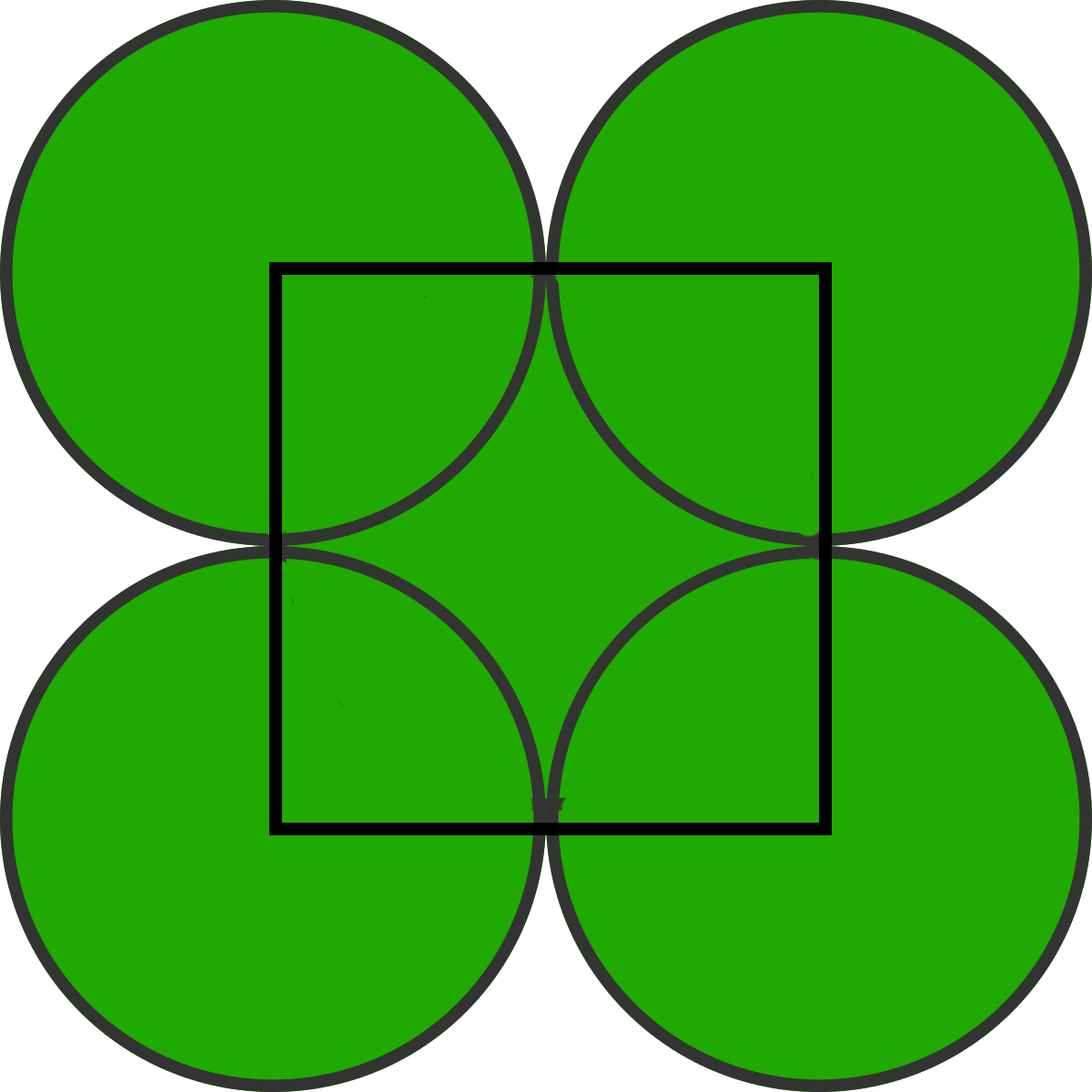5 Circles
5 unit circles are placed with their centers on a square grid. What is the total green area?
Note: The centers of the circles are ( − 1 , 1 ) , ( 1 , 1 ) , ( 0 , 0 ) , ( − 1 , − 1 ) , ( 1 , − 1 ) .
This section requires Javascript.
You are seeing this because something didn't load right. We suggest you, (a) try
refreshing the page, (b) enabling javascript if it is disabled on your browser and,
finally, (c)
loading the
non-javascript version of this page
. We're sorry about the hassle.
4 solutions
 A
=
4
π
r
2
+
(
2
2
−
π
r
2
)
=
4
π
+
4
−
π
=
4
+
3
π
A
=
4
π
r
2
+
(
2
2
−
π
r
2
)
=
4
π
+
4
−
π
=
4
+
3
π
Need much explain
AMAZING EXPLANATION
 The radius of each of the outer circles is 1. So, if we connect the centers of each circle, we get a square that is 2 units x 2 units in dimension. This includes 1/4 of each circle, leaving the area of the remaining outer circle at 3/4 * π x 1², or 3π/4. Multiplying that by 4 circles, we get 4 x 3π/4=3π. Adding this to the square, we get the total green area to be (2x2)+3π; or 3π+4
☺☺☺☺
The radius of each of the outer circles is 1. So, if we connect the centers of each circle, we get a square that is 2 units x 2 units in dimension. This includes 1/4 of each circle, leaving the area of the remaining outer circle at 3/4 * π x 1², or 3π/4. Multiplying that by 4 circles, we get 4 x 3π/4=3π. Adding this to the square, we get the total green area to be (2x2)+3π; or 3π+4
☺☺☺☺
If we draw a 2 × 2 square around any circle (other than the middle one; one of its vertices is at the center of the "middle" circle), we will see the green area within this square is (the area of the circle + a quarter of the area outside the circle (the difference of the areas of the square and the circle)):
a = π + 4 1 ( 2 2 − π ) = 4 3 π + 1
As we have 4 "outer" circles, each with a 2 × 2 square around it:
A = 4 a = 4 × ( 4 3 π + 1 ) = 4 + 3 π
Relevant wiki: Length and Area - Composite Figures
The figure is symmetrical about its midpoint,
so we can split it into 4 equal regions as shown above.
If we want to find the area of the entire region,
it is equivalent to 4 times the area of the figure below.
The area of the figure on the consists of a dark green circle and a light green region.
The area of the dark green circle is just the area of a unit circle, π r 2 = π .
The area of the light green region is the area of a square with side length 1, minus the area of a quarter of a unit circle:
1 2 − 4 1 π ⋅ 1 2 = 1 − 4 1 π .
Thus, the total area of the figure on the right is π + ( 4 1 − 4 1 π ) = 1 + 4 3 π .
Multiply this number by 4 gives us the desired answer 4 + 3 π .